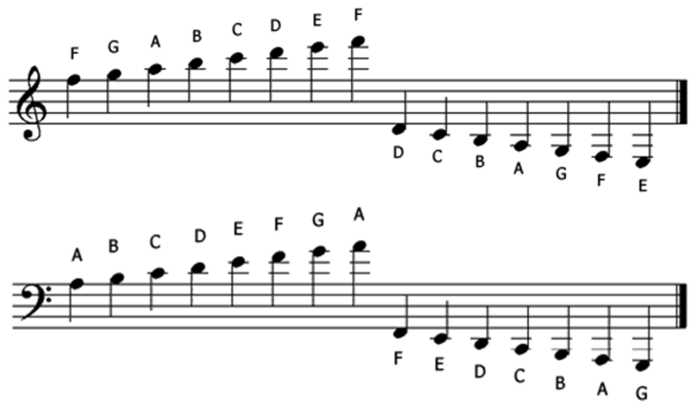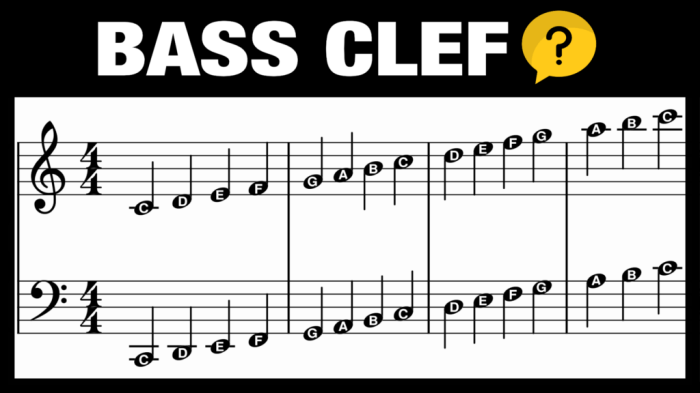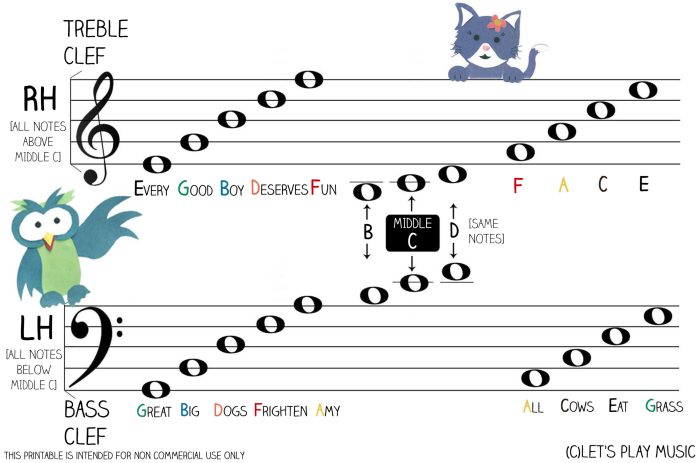The musical words bass clef 2 answer key is an essential tool for musicians seeking to master the intricacies of the bass clef. This guide provides a comprehensive understanding of bass clef notation, enabling musicians to navigate the lower registers with confidence and precision.
Delving into the fundamentals of bass clef notation, this answer key meticulously explains the placement of notes on the staff, establishes the relationship between pitch and line/space placement, and unveils the significance of key and time signatures. It empowers musicians with the knowledge to decipher musical patterns and intervals, unlocking the expressive potential of the bass clef.
Musical Bass Clef Notation

The bass clef, also known as the F clef, is a musical notation used to represent low-pitched notes in the bass register. It is placed on the fourth line of the staff, with the two dots of the clef symbol encircling this line.The
bass clef staff consists of five lines and four spaces. The notes are placed on these lines and spaces to indicate their pitch. The higher the line or space on the staff, the higher the pitch of the note. Conversely, the lower the line or space, the lower the pitch of the note.
Note Placement on the Bass Clef Staff
The notes on the bass clef staff are named according to the lines and spaces they occupy. The lines, from bottom to top, are named G, B, D, F, and A. The spaces, from bottom to top, are named A, C, E, and G.For
example, the note G is placed on the bottom line of the bass clef staff. The note A is placed in the first space above the bottom line. The note C is placed on the second line from the bottom, and so on.
Relationship between Pitch and Line/Space Placement
The relationship between pitch and line/space placement on the bass clef staff is based on the musical alphabet. The musical alphabet consists of the notes A, B, C, D, E, F, and G. These notes are arranged in ascending order of pitch, with A being the lowest note and G being the highest note.On
the bass clef staff, the lines and spaces represent the notes of the musical alphabet in ascending order. The bottom line represents the note G, the next line up represents the note A, and so on. The spaces between the lines also represent the notes of the musical alphabet in ascending order, starting with the space below the bottom line, which represents the note A.
Reading Music with the Bass Clef: Musical Words Bass Clef 2 Answer Key

Reading music with the bass clef is essential for musicians who play instruments such as the bass guitar, cello, and tuba. The bass clef is a musical notation system that indicates the pitch of notes for instruments that play in the lower register.
Understanding the bass clef allows musicians to accurately interpret and perform music written for their instruments.
The bass clef consists of two lines and three spaces, with each line and space representing a different pitch. The bottom line of the clef is the F line, and the top line is the D line. The spaces between the lines are named E, G, and B.
Notes are placed on or between the lines and spaces to indicate their pitch.
Key Signatures
Key signatures are symbols placed at the beginning of a piece of music that indicate the key in which the music is written. A key signature consists of one or more sharps or flats, which indicate that certain notes in the scale are raised or lowered by a half step.
Understanding key signatures is important for musicians because it helps them to identify the notes that are in the key and to play the music correctly.
Time Signatures
Time signatures are symbols placed at the beginning of a piece of music that indicate the number of beats in each measure and the type of note that receives one beat. A time signature consists of two numbers, with the top number indicating the number of beats in each measure and the bottom number indicating the type of note that receives one beat.
Understanding time signatures is important for musicians because it helps them to determine the tempo and rhythm of the music.
Recognizing Patterns and Intervals
Recognizing patterns and intervals is an important skill for musicians who read music. Patterns are sequences of notes that repeat themselves, and intervals are the distance between two notes. Understanding patterns and intervals helps musicians to identify and play music more easily.
Bass Clef in Different Musical Genres

The bass clef, an indispensable musical notation tool, finds its place in a diverse array of musical genres, each utilizing its unique characteristics to enhance the musical experience.
Classical Music
In the realm of classical music, the bass clef serves as the foundation for the orchestra’s low-pitched instruments, such as the double bass, cello, and bassoon. These instruments often carry the harmonic backbone of the music, providing a solid and resonant base for the melodic lines above.
Jazz Music
In the improvisational world of jazz, the bass clef is a crucial component for the bass guitar and double bass. These instruments play a vital role in establishing the groove and providing harmonic support for the soloists. Jazz bassists often explore complex walking bass lines and intricate chord progressions, demonstrating the versatility of the bass clef in this genre.
Popular Music
The bass clef has a prominent presence in popular music, including genres like rock, pop, and funk. In these settings, the bass guitar is typically responsible for laying down the rhythmic foundation and providing melodic support. The bass lines in popular music often feature catchy grooves and syncopated rhythms, adding a driving force to the music.
Bass Clef Transposition

Transposition in music involves altering the pitch of a musical piece to a different key while maintaining the interval relationships between the notes. In the context of the bass clef, transposition is commonly used to adapt musical arrangements to the vocal range of singers or the specific capabilities of different instruments.
Examples of Transposition
For example, a piece originally written in the key of C major for the bass clef can be transposed to the key of G major by raising all the notes by a perfect fifth. This means that the note C would become G, D would become A, and so on.
Significance of Transposition, Musical words bass clef 2 answer key
Transposition plays a crucial role in musical collaborations and arrangements. It allows musicians to perform pieces written in different keys without the need to rewrite the entire score. Additionally, transposition enables vocalists to sing in a comfortable range while maintaining the original musical structure.
Common Queries
What is the purpose of the bass clef?
The bass clef is used to notate the lower-pitched notes in music, typically played by instruments such as the cello, bassoon, and tuba.
How do I read notes on the bass clef?
To read notes on the bass clef, you need to understand the relationship between the lines and spaces on the staff and the corresponding notes.
What is transposition in music?
Transposition is the process of changing the key of a piece of music while maintaining the same intervals between the notes.